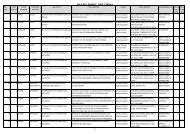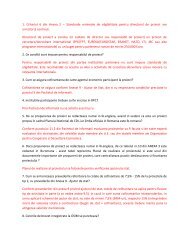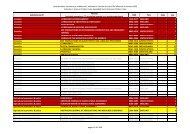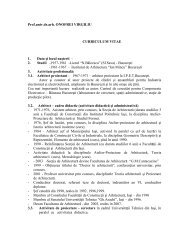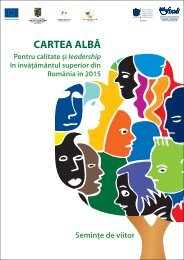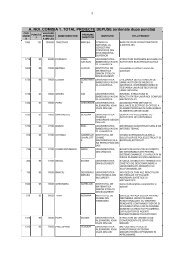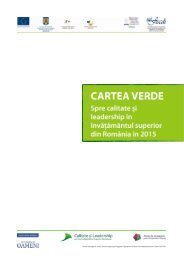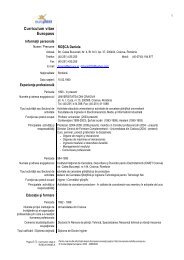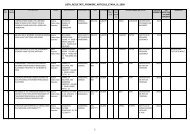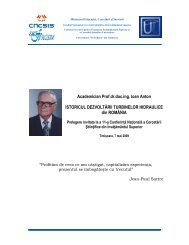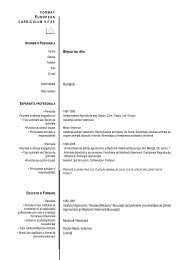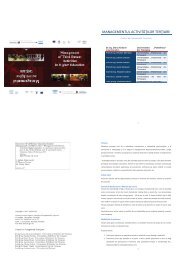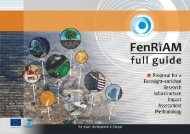Modul de formare-Managementul resurselor financiare - uefiscdi
Modul de formare-Managementul resurselor financiare - uefiscdi
Modul de formare-Managementul resurselor financiare - uefiscdi
- No tags were found...
You also want an ePaper? Increase the reach of your titles
YUMPU automatically turns print PDFs into web optimized ePapers that Google loves.
onuses <strong>de</strong>pending on the field of study, the stu<strong>de</strong>nt status and the rank of the higher education<br />
institution.<br />
Thus, the financing of a stu<strong>de</strong>nt is calculated by dividing all funds available for education<br />
funding (grants allocated by the Higher Education Funding Council plus the subsidies granted<br />
to cover school fees) to the total number of equivalent stu<strong>de</strong>nts. This rate of funding (grant +<br />
subsidies) is called the basic price.<br />
Thus, the standard resource for a university results by weighting the total number of equivalent<br />
stu<strong>de</strong>nts to the basic price.<br />
In the next phase, the standard resource is adjusted according to the inflation rate and to the<br />
estimates of the Higher Education Funding Council on income from tuition fees of the stu<strong>de</strong>nts.<br />
1.3.3. The financing of the public higher education institutions in Denmark<br />
In the last 10-15 years the funding mechanism of Danish higher education has un<strong>de</strong>rgone<br />
various changes. Through the financing reform it was inten<strong>de</strong>d mainly the <strong>de</strong>centralization of<br />
funding from a planned one to a global financing one taking the form of grants, the state giving<br />
a higher priority to the programs of study and to the implementation of a system of quality<br />
control.<br />
The current funding mechanism is based on the number of active stu<strong>de</strong>nts and those who<br />
promote their exams and therefore, the institutional funding is directed towards the<br />
outputs. Also, in Denmark, the funds allocated for education funding are separate from those<br />
allocated to research funding. Thus, the higher education institutions have separate budgets for<br />
education and for research.<br />
The Danish higher education financing strategy has known a new configuration since 1992.<br />
The government allocations established un<strong>de</strong>r the new funding mo<strong>de</strong>l are based on the<br />
introduction of agreements for a period of 4 years that establish total number of places of study<br />
in an institution (before the reform, these agreements were annual). The universities are free to<br />
reallocate the places of study between different fields of study. This increases their flexibility<br />
and makes them capable to adapt to the changes in <strong>de</strong>mand, which would lead to a greater<br />
balance between supply and <strong>de</strong>mand.<br />
The Danish higher education sector is financed by the Ministry of Education (the research<br />
funding is un<strong>de</strong>r the auspices of the Ministry of Science, Technology and Innovation). For each<br />
stu<strong>de</strong>nt who promotes an examination, a certain amount of money is allocated to the<br />
university. All these so called "active stu<strong>de</strong>nts" <strong>de</strong>termine the available budget. In this system<br />
each exam is scored. For example, all the exams within a faculty of 5 years accounts for 5<br />
points. The universities are not "compensated" for stu<strong>de</strong>nts who do not promote the exams.<br />
The funding allocation <strong>de</strong>pending on the passed exam vary based on the field of study and has<br />
three components 9 :<br />
funds for educational expenses and equipment;<br />
funds for joint expenses (e.g. administration, buildings);<br />
funds allocated for the practical work<br />
9 Vossenstein H. (2003), Country report: Higher education in Denmark, CHEPS (Center for Higher Education<br />
Policy Studies), pg. 47, available online at: www.utwente.nl/cheps/documenten/<strong>de</strong>nmark.pdf, accessed on<br />
12.12.2005<br />
10



